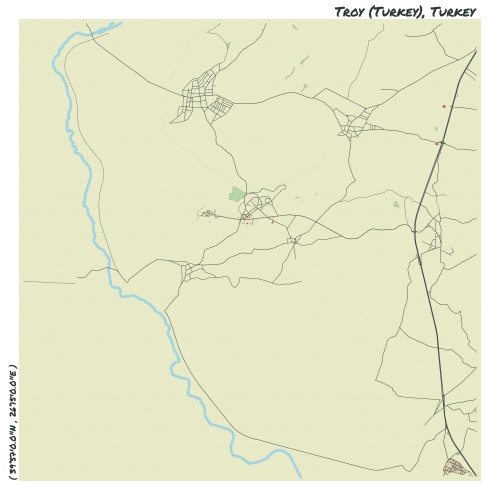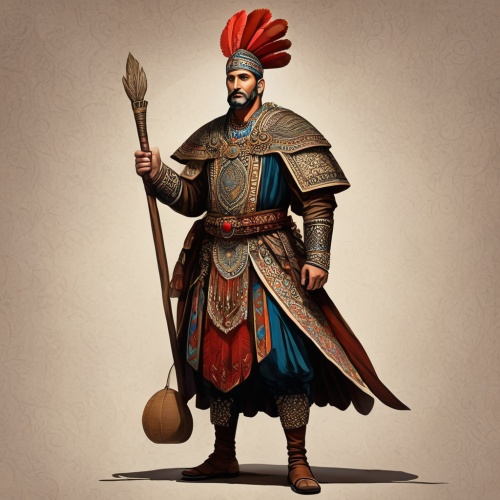Understand
Situated on Hisarlk Hill, at the northwestern tip of the Troad Peninsula, lies the captivating site of Troy. This site has played a vital role in Mediterranean history, connecting the Black Sea to the Mediterranean via the Dardanelles and Turkish Straits. Its strategic location has attracted human settlements since 3000 BC. The site's earliest city, a small Neolithic settlement, has left few remnants. However, it was followed by Troy II, a city of modest size but notable for its monumental buildings and astonishing treasures. Archaeologists initially believed this city to be from a later period due to its grandeur. Troy VI and Troy VII, dating back to the Late Bronze Age, are the most famous layers. It is highly likely that Troy VI corresponds to the city known as Wilusa by the Hittites and later immortalized in legends as Troy. The Trojan War, triggered by the abduction of Queen Helen of Sparta, has become a legendary tale. After nine years of unsuccessful attempts to breach the city's defensive walls, the Greeks resorted to a cunning plan. They presented the Trojans with a colossal wooden horse, concealing Greek soldiers inside. The unsuspecting Trojans accepted the horse as a peace offering and brought it into their city. The result was the downfall of Troy, as the hidden soldiers emerged and conquered the city from within. While historians continue to debate the exact nature of the Trojan War, the identification of Hisarlk Hill as the site of Troy is widely accepted. Coins found at the site and Hittite records of conflicts involving Greek people further support this claim. Whether inspired by true events or mythical tales, Troy's significance cannot be denied. Over the centuries, Troy experienced periods of abandonment, reconstruction, and destruction. Greek colonists arrived and built Troy VIII, later known as Ilion. The city, which worshipped and demolished parts of its ruins, faced a sack during a rebellion against the Byzantines. It was then rebuilt as Ilium, designated as Troy IX archaeologically. Eventually, the Trojan bay silted up, leading to Troy's demise and burial under layers of soil. In 1868, Heinrich Schliemann conducted amateurish excavations at Hisarlk Hill, in an attempt to prove the existence of Troy. Despite damaging parts of the remains during his dig, Schliemann still uncovered treasures, which caused a sensation. The photo of his Greek wife, Sophia Schliemann, adorned in these treasures, remains a lasting memory of his discovery. While Troy is yet to be fully unearthed, ongoing excavations continue to uncover its captivating secrets.
Map & Climate
Popular Foods
 Dish 1: Köfte - Köfte is a traditional Turkish dish consisting of seasoned minced meat, typically beef or lamb, formed into patties or torpedo shapes and grilled or fried. It's often served with flatbread, vegetables, and a yogurt-based sauce called cacık.
Dish 1: Köfte - Köfte is a traditional Turkish dish consisting of seasoned minced meat, typically beef or lamb, formed into patties or torpedo shapes and grilled or fried. It's often served with flatbread, vegetables, and a yogurt-based sauce called cacık.  Dish 2: Kebap - Kebap refers to a variety of grilled meat dishes in Turkish cuisine, typically featuring marinated cubes or thin slices of beef, lamb, or chicken, skewered and grilled over an open flame. They can be served plain or with a side of rice, bulgur, or flatbread, and often accompanied by a range of sauces and condiments.
Dish 2: Kebap - Kebap refers to a variety of grilled meat dishes in Turkish cuisine, typically featuring marinated cubes or thin slices of beef, lamb, or chicken, skewered and grilled over an open flame. They can be served plain or with a side of rice, bulgur, or flatbread, and often accompanied by a range of sauces and condiments.  Dish 3: Baklava - Baklava is a sweet pastry made of layers of filo dough, chopped nuts (usually walnuts or pistachios), and butter, then cut into diamond or square-shaped portions and held together with honey or sugar syrup. This rich, crunchy dessert is a staple in Turkish cuisine and often enjoyed during special occasions or as a treat.
Dish 3: Baklava - Baklava is a sweet pastry made of layers of filo dough, chopped nuts (usually walnuts or pistachios), and butter, then cut into diamond or square-shaped portions and held together with honey or sugar syrup. This rich, crunchy dessert is a staple in Turkish cuisine and often enjoyed during special occasions or as a treat. 




Comments
NO COMMENTS